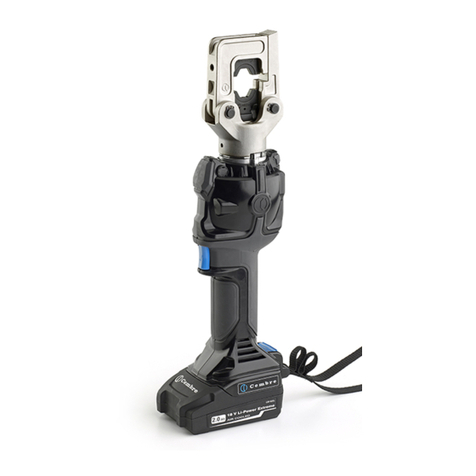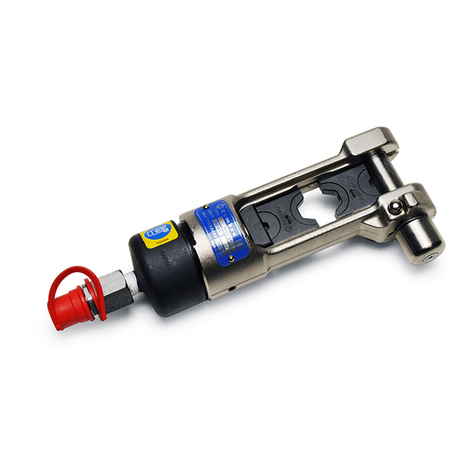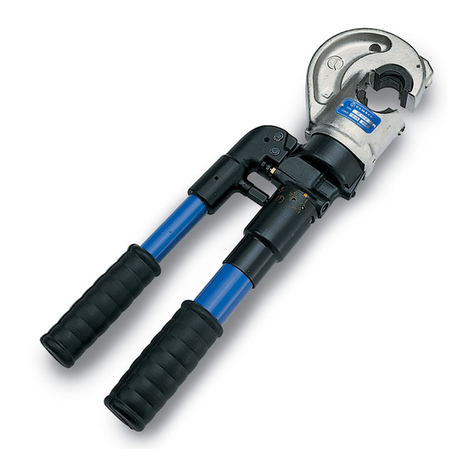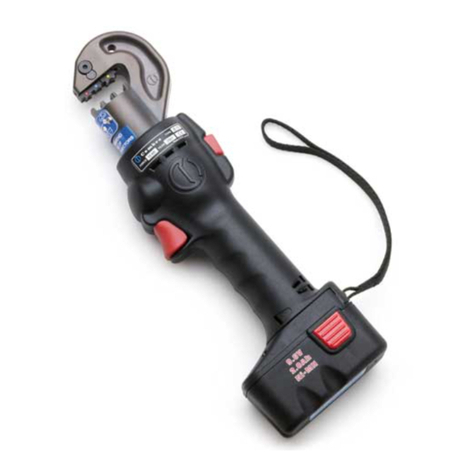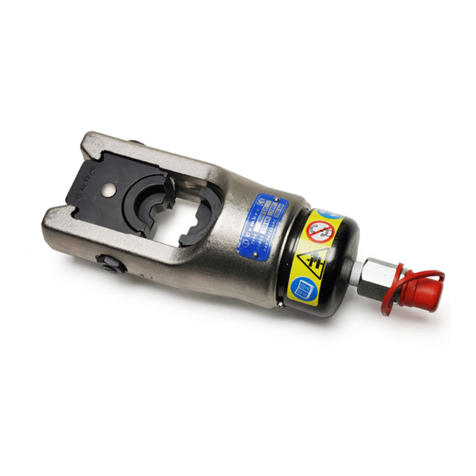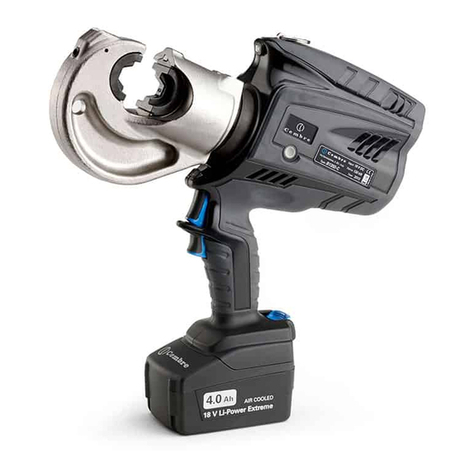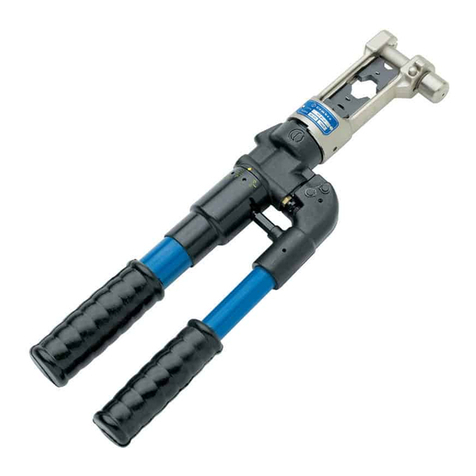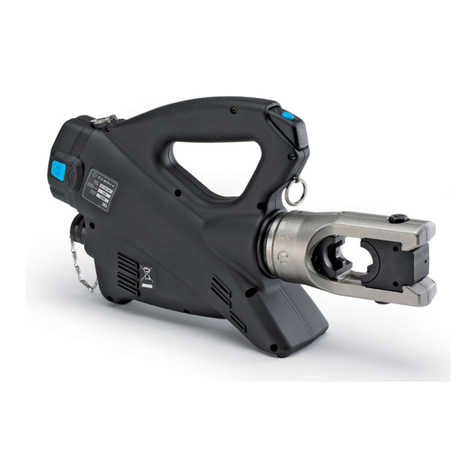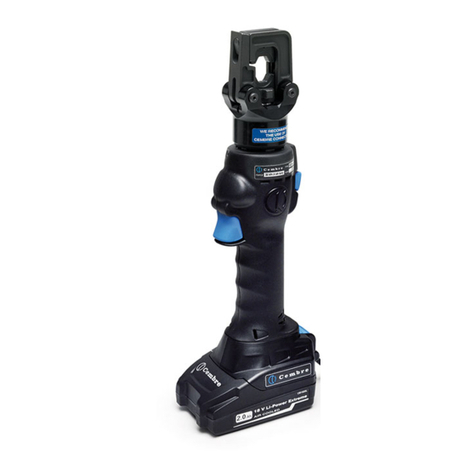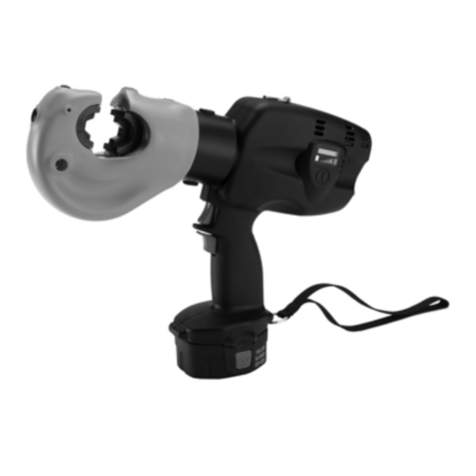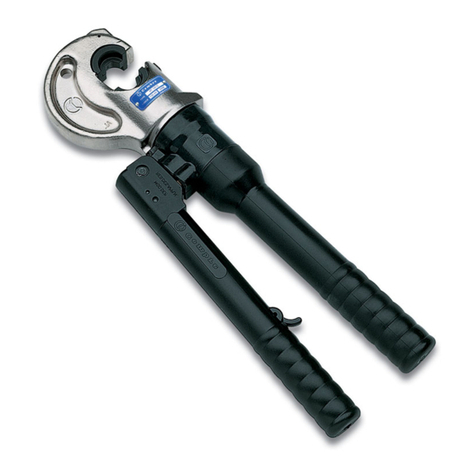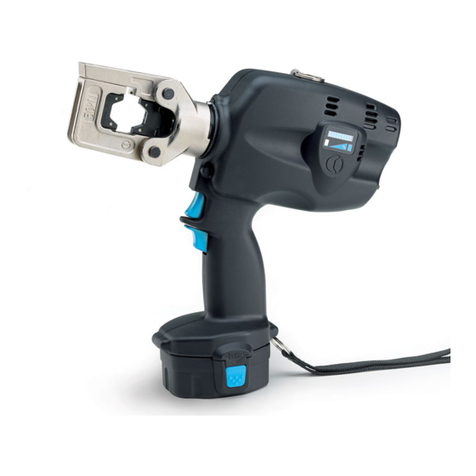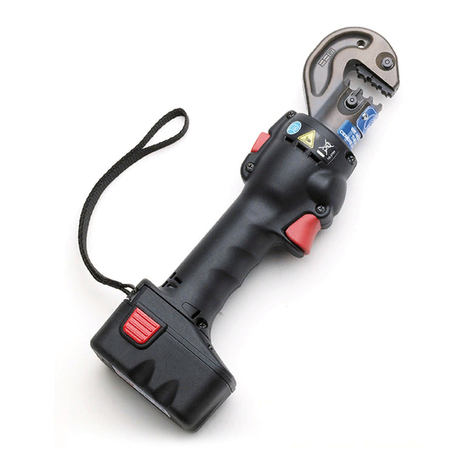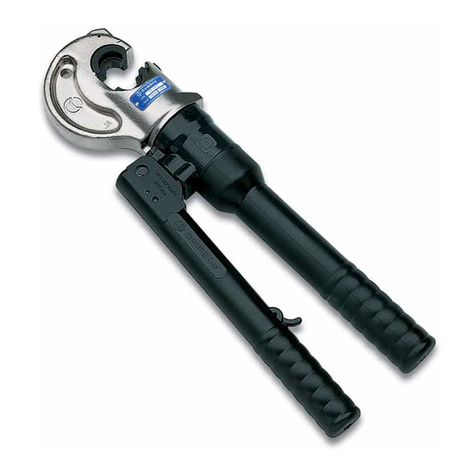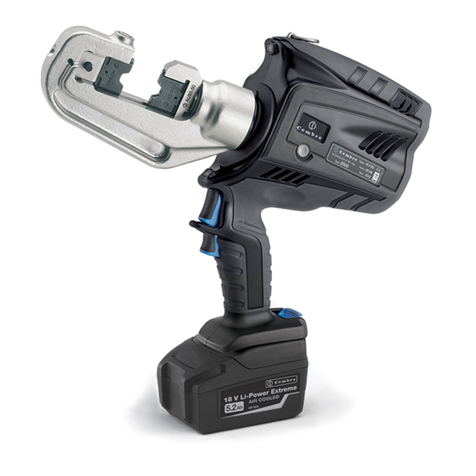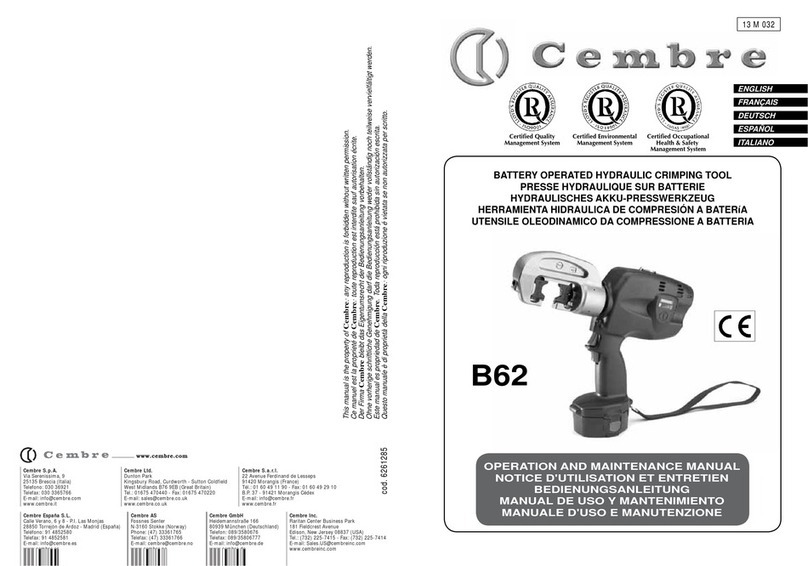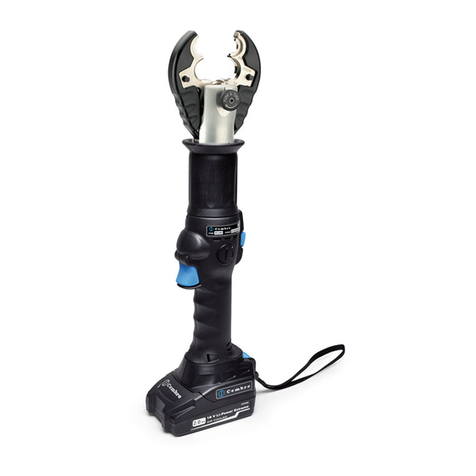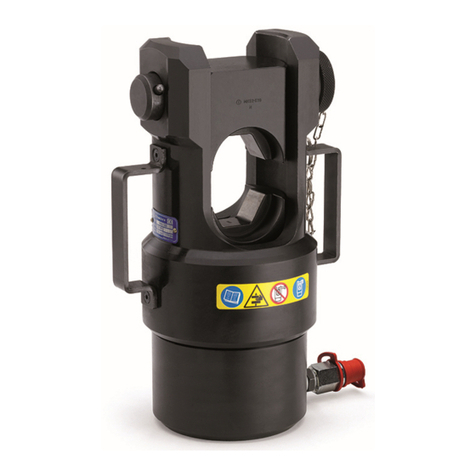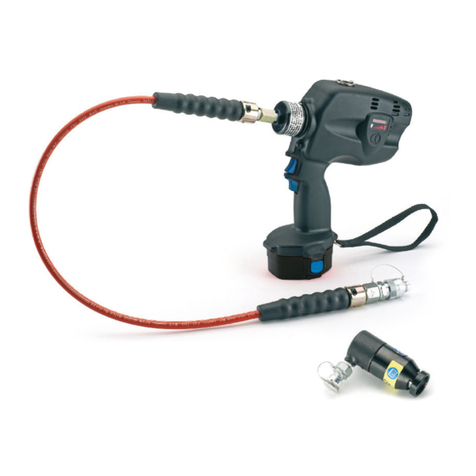
9
2.8) Battery status
The battery is equipped with LED indicators that show the
remaining battery life at any time by pressing the adjacent
button (P):
4 LEDs illuminated: fully charged
2 LEDs illuminated: 50 % capacity
1 LED flashing: minimum charge, replace the battery.
With the battery inserted into the tool, the remaining
battery life can also be checked on the display, via touch
button selection (Ref. to § 4).
The screen shown alongside indicates that the battery voltage has
dropped below a minimum safety threshold; under these conditions
the tool will not start, and it is necessary to recharge or replace the battery.
The approximate time to fully recharge a battery is about 80 minutes.
After eachworkingcycle,and afterthe extraction ofthe battery fromthe tool,an integrated
battery cut-o device will operate after 70 s approx.
Then the LED nearest to button (P) will ash 5 times each 14 s approx. The battery will be reactivated
when it is reintroduced into the tool and the operating button is pressed.
2.9) Using the battery charger
Carefully follow the instructions in the battery charger user manual.
3. DIE AND ADAPTER ASSEMBLES
B1500 and B1500A tools directly accept all“P”type dies commonly used in industry and when used
with adapter AU150-C (optional accessory) will accept semi-circular slotted dies (U-dies) common
to most 12 ton tools and 14,6 ton Cembre tools. Depending on the dies to be used, please proceed
as follows:
3.1) Use of “P” dies (Ref. to Fig. 4a)
Press pins (13) and insert half of the “P”die into the upper seat of the head and the other half
into the lower seat of the ram; to disassemble them press the pins (13) and slip them from the
head.
3.2) Use of semi-circular slotted dies (“U” dies) (Ref. to Fig. 4b)
Insert the 2 parts of the AU150-C adapter following the instructions as § 3.1.
Select the appropriate “U”die set for the connector to be crimped.
Press pins (14) and lock the parts of the “U” dies into the upper and lower parts of the AU150-C.
3.3) Use of “15500” series dies (Ref. to Fig. 5)
B1500YA tool directly accepts the “15500”series dies commonly used in industry.
Select the appropriate “15500”die set for the connector to be crimped.
Press pins (15) and lock one die into the upper seat of the head and the other die into the lower
seat of the ram; to disassemble them press the pins (15) and slip them from the head.
BATTERY Ï
Ð
max.
BATTERY BATTERY
Ï
Ð
min.
P
